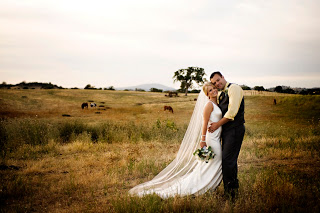
 On Monday, May 24 my family and I attended the Praca de Touros at the Stevenson Ranch. I had never been to a bullfight in my life, and to walk in the ring just outside the arena while an agitated bull was inside was just slightly frightening to say the least. But despite the formidable bull inside the arena, the Forcados, Pantalones, and Matadores made me feel much safer. The bravery displayed by all who entered the arena was boundless. Those bullfighters have guts, that’s for sure.
On Monday, May 24 my family and I attended the Praca de Touros at the Stevenson Ranch. I had never been to a bullfight in my life, and to walk in the ring just outside the arena while an agitated bull was inside was just slightly frightening to say the least. But despite the formidable bull inside the arena, the Forcados, Pantalones, and Matadores made me feel much safer. The bravery displayed by all who entered the arena was boundless. Those bullfighters have guts, that’s for sure.
After attending the bullfight and being exposed to such a cultural and traditional-rich event, I just had to know more about the history of Portuguese bullfighting.
Why were the horns on the bull covered? Obviously for safety reasons. . . Duh. But this precaution is believed by historians to date back to the reign of King Joseph the I of Portugal after his son/heir Marquis of Marialva’s horse was injured by the bull in the arena; leading to Marquis of Marialva to be thrown from his horse and fatally kicked by the bull.
How long has bullfighting been around? Contrary to the common belief that bullfighting originated in Spain, bullfighting dates back to approximately 711 A.D during the Roman empire. Along the Iberian Peninsula was where bullfighting was developed further by the Moors from North Africa. Bullfighting did not reach Portugal until roughly the twelfth century.
Why doesn’t anyone kill the bulls? Ever since 1799 there has been much question over whether to kill the bull or not. Laws in Portugal were passed in order to prevent bulls from being killed. In California-Portuguese bullfights, the bulls are not harmed in any of the events. Agitated? Sure. Physically harmed? Not in the least. They are not thrown to the ground and no blood is drawn from them. They suffer far less than the people in the arena!
How long have bullfights been in California? Bullfights were in California since 1913. They were outlawed in California in 1957 – but after lobbying by many of the Portuguese residents of Gustine, bullfights were once again allowed; thankfully 🙂
Are there any female bullfighters? Yes. Sarah Pink, Muriel Feiner,and Conchita Cintron are several famous female bullfighters who are very gutsy in my opinion!
Bullfights. Prevalent in the Arts? Pablo Picasso doodled bullfights as a young boy.
Bullfighting has appeared in paintings dating back to 5650 A.D. Artist Edouard Manet painted The Dead Toreador, his most famous work. Bullfighting is even in one of the most popular and loved opera’s – George Bizet’s Carmen based on a love between a spirited girl and her bullfighter lover. Frank Harris and Ernest Hemmingway were two English authors who were able to capture and depict bullfights in an accurate and influential way.
Does the bull ever win? . . . I hope not! :0
I cannot express how grateful I was to attend the bullfight at Stevenson. I will certainly be attending more bullfights in the future!



 Read more!
Read more!

Sorry, the comment form is closed at this time.